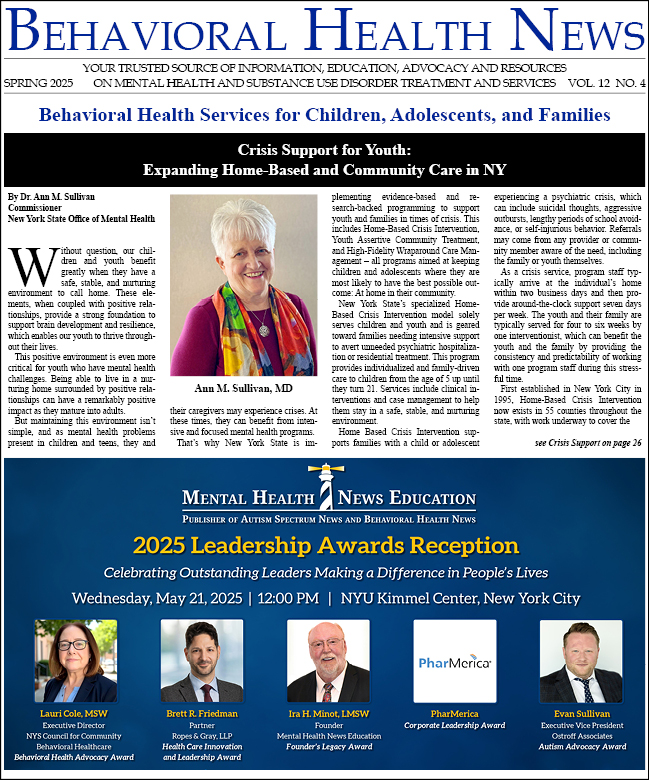When I had my son in 2024, I had more than a few medical professionals warn me that due to my anxiety pre-pregnancy, I was at greater risk for developing a perinatal mood disorder (PMD), specifically postpartum anxiety (PPA) and/or postpartum depression (PPD). I was warned to contact someone if I ever felt like harming myself or the baby, but that the “baby blues” were also a totally normal experience. As a clinical mental health professional, I knew this. I was confident. I was ready.

I think it’s easy to give abstract warning signs based on the worst-case scenario; given the severity, I don’t think it’s a bad strategy… but I do think that it’s not a completely accurate representation of what these mood disorders can look like for different people. These medical professionals had a hunch and were right: I went on to develop PPA. The thing is, I never wanted to hurt myself or my baby. Instead, I had painful, intrusive thoughts that the Walmart we were in would suddenly burn down. I also refused to bathe the baby for months because “what if I sneeze and I close my eyes, and then he drowns?” I was used to anxiety, and I have a wide range of coping mechanisms, but this was a level that I was not prepared for. How do you cope with your brain telling you that you will be responsible for this baby’s death because you can’t control your allergies?
Things got better, and medication helped me greatly. I am grateful for the support that I received from all of those professionals, but I wish that they had expanded my understanding of PPA/PPD beyond the worst-case scenario. I was afraid to reach out because I knew in my heart that these were ridiculous catastrophes that had a VERY limited probability of occurring. There is a stigma against moms struggling with mental health, and I felt foolish feeling these things on top of having no idea how to be a parent, which ultimately spiraled into what I now see was probably a sprinkling of PPD on top of the PPA.
Knowing what I now know from first-hand experience has absolutely changed how I approach PPA/PPD from a clinical perspective. Addressing these issues is a challenge that requires a collaborative effort. I have included four recommendations for any clinician working with parents and soon-to-be parents, along with how to address any outstanding mental health stigma.
First, let’s talk about how the presentation of PPA/PPD can look different for everyone. Specifically, let’s educate families on how it’s more than thoughts of harming yourself or your baby. Some families feel educated about PPD, but PPA is still a relatively unknown disorder in young families (Ponzini et al., 2021). A lot of the stigma surrounding these disorders comes from a natural discomfort in the idea that a parent would ever do anything to hurt their baby, but PPA/PPD is so much more than that. Furthermore, the fear of judgment is often a limitation for so many new families who may need help but fear reaching out.
Second, mental health professionals should prioritize talking about the wide range of symptoms associated with postpartum mood disorders, prevalence, and latency. In addition, cultural and contextual factors should be considered when supporting these families. There is a known disparity in mental health support for racial and ethnic minorities when it comes to PPA/PPD, a disparity that is often exacerbated by socioeconomic status and stigma. Mental health professionals play a critical role in reducing the internal stigma that may prevent families in need from reaching out for support.
Third, mental health should continue to be prioritized as part of routine pre/perinatal care. I am grateful that my team emphasized my mental health, but that is not necessarily the case for everyone. In addition, these screenings should extend to the father. While not subject to the same hormonal changes, fathers may feel a strain on their relationship, heightened anxiety, and poor mood overall (Kim & Swain, 2007). Fathers (or really, any non-birthing partners) are subject to a different stigma than their partners, but they are not exempt from that pressure.
Fourth and finally, there needs to be greater advocacy for parents in the workplace. While stigma against PMD may not be overt in most workplaces, the covert barriers are strong enough to act as a strong deterrent for those already struggling. This stigma may be perceived as a weakness rooted in shame, fear of negative stereotypes and judgment, or just a lack of institutional policies to help parents as they return to work (Thorsteinsson et al., 2018).
Everyone’s postpartum experience is different. One baby may be magical and effortless, while another may leave the family feeling anxious and overwhelmed. Both experiences are valid; the problem lies in the stigma. Combatting this stigma is a multi-faceted approach with a solution that leans heavily into collaboration and advocacy. Education on topography, prevalence, and latency could be extremely helpful in early recognition. Prioritizing mental health for both parents during pre/perinatal care is also critical in identifying problems early and addressing them before they escalate. Finally, advocating for better parental care and acceptance may help reduce the stigma that parents feel when returning to work. I leave you with this note: my own postpartum experience was rocky, with the best support and care. I had a wonderful partner and an excellent care team. If this was my experience, then imagine the difficulties that can arise without this support, and addressing the stigma surrounding PMD is a good place to start.
Jeridith Lord, LCPC, BCBA, is Adjunct Professor of Institute for Applied Behavioral Science, Endicott College.
References
Kim, P., & Swain, J. E. (2007). Sad dads: paternal postpartum depression. Psychiatry (Edgmont (Pa.: Township)), 4(2), 35–47.
Kozhimannil, K. B., Trinacty, C. M., Busch, A. B., Huskamp, H. A., & Adams, A. S. (2011). Racial and ethnic disparities in postpartum depression care among low-income women. Psychiatric Services, 62(6), 619–625.
Ponzini, G. T., Snider, M. D., Evey, K. J., & Steinman, S. A. (2021). Women’s knowledge of postpartum anxiety disorders, depression, and cognitive behavioral therapy. The Journal of Nervous and Mental Disease, 209(6), 426-433.
Thorsteinsson, E. B., Loi, N. M., & Farr, K. (2018). Changes in stigma and help-seeking in relation to postpartum depression: non-clinical parenting intervention sample. PeerJ, 6, e5893. https://doi.org/10.7717/peerj.5893







